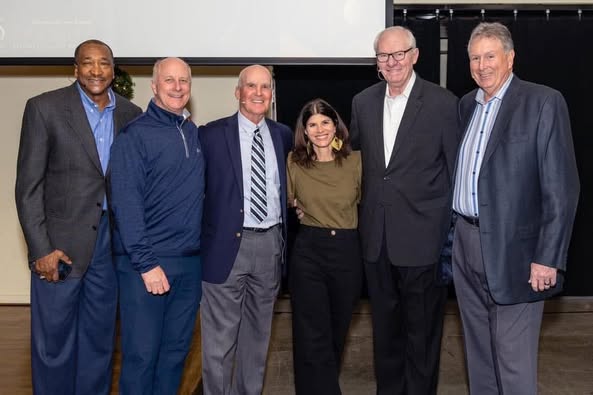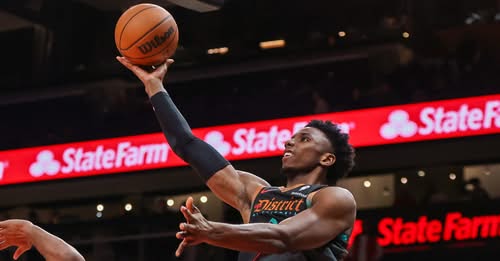Jonathan Kuminga’s Standoff with Warriors Front Office Hits Critical Juncture as Tensions Deepen and Compromise Looms
The Golden State Warriors are no strangers to internal tension. Over the last decade, they’ve juggled dynastic dominance, emerging young talent, and high-pressure expectations with a tightrope act few franchises have managed with similar success. But the latest situation with Jonathan Kuminga, their rising forward brimming with athleticism and untapped potential, has placed them at a crossroads once again. The ongoing impasse between Kuminga and the Warriors’ leadership has entered a new, more complex stage — and if it’s not addressed with care, the fallout could ripple through the organization far beyond the 2025 season.
Kuminga’s evolution as a player has been steady but complicated. Drafted seventh overall in 2021, he was heralded as a future cornerstone — a player whose blend of length, power, and explosiveness could eventually take over the torch from the older generation. And at various moments over the past two seasons, he’s flashed that potential. When locked in, Kuminga can be an elite defender, a high-flying transition finisher, and an offensive mismatch nightmare. But consistency, trust from the coaching staff, and fit within Steve Kerr’s system have all remained elusive.
What’s now clear is that the growing divide between Kuminga’s expectations and the Warriors’ current reality has become impossible to ignore. Both sides want success, but they appear to be interpreting that vision through vastly different lenses. Kuminga believes, with some merit, that he’s earned a larger role — not just minutes off the bench, but a starting-caliber role with offensive autonomy and defensive responsibility. The Warriors, however, seem to view him as a situational weapon — explosive and valuable, but still raw in areas like decision-making, spacing, and off-ball movement.
That difference in perspective has created a standoff. Kuminga wants to ascend. The Warriors want to control the rate of his climb. And now, as training camp nears, the window to find alignment is rapidly closing.
Internally, the Warriors are still trying to reconcile two competing timelines. On one hand, they owe it to Stephen Curry, still playing at an elite level, to build a championship-caliber roster that can contend now. On the other, they’re trying to develop and retain young talent like Kuminga, Brandin Podziemski, and Trayce Jackson-Davis for a future beyond the dynasty’s twilight. The problem is that those two goals are increasingly incompatible — especially when young players want roles that may encroach on veterans’ minutes or offensive touches.
Kuminga’s frustration has simmered for more than a year. Last season’s playoff rotation saw him essentially marginalized — a move that surprised many fans and infuriated those in Kuminga’s camp. Afterward, he voiced his concerns not only privately but through subtle public channels. Social media posts, cryptic interviews, and the occasional body language moment on the court all pointed to a player wrestling with a deep sense of underutilization.
Steve Kerr, for his part, has largely defended the team’s approach. He’s often pointed to Kuminga’s progress, praised his work ethic, and reiterated the importance of team-first play within the Warriors’ system. But he’s also been hesitant to commit to major role expansions, especially when trust and execution in key moments are still developing.
Enter the new phase of the impasse — one where the Warriors must make a definitive choice. Do they fully commit to Kuminga, restructuring roles and responsibilities to let him thrive, even at the risk of disrupting their veteran hierarchy? Or do they seek to trade him, acquiring win-now assets that better suit their short-term title ambitions, but potentially giving up on a star in the making?
There is a third option — a compromise proposal that may salvage the relationship and give both sides a path forward.
The proposal is this: make Kuminga the first forward off the bench, but expand his minutes dramatically, targeting at least 26–30 per game. Shift him into a sixth-man role with structured offensive responsibilities — running in transition, attacking mismatches, and working as a secondary playmaker alongside either Curry or Chris Paul. Simultaneously, commit to giving him end-of-game defensive assignments, allowing him to build trust and confidence in high-leverage situations. In exchange, Kuminga agrees to lean fully into the team’s motion principles, reduce isolation possessions, and work with assistant coaches on refining his off-ball instincts and reads.
This isn’t a half-measure. It’s a real commitment to Kuminga’s development while still preserving the core structure of the team. It acknowledges his talent and desire for growth while still reinforcing that the Warriors play a particular brand of basketball — one rooted in trust, spacing, and constant movement.
This compromise also has precedent. Andre Iguodala, the quintessential sixth man, thrived in a similar role during the Warriors’ title runs. He didn’t start, but he closed games. He didn’t dominate the ball, but he made smart decisions. Kuminga isn’t Iguodala — he’s more explosive, more raw — but the principle still applies. A player can be impactful without starting, and leadership can show faith in a player without handing him the keys overnight.
The risks are real, of course. Kuminga may feel the compromise isn’t enough, especially if it comes without a long-term contract extension. And from the team’s perspective, giving him more touches and decision-making responsibilities could lead to costly mistakes in close games. But the upside — a fully engaged, steadily improving, and eventually dominant Kuminga — is worth the gamble.
There’s also the broader context to consider. The Warriors have already parted ways with James Wiseman, another high lottery pick who struggled to find his role within their championship structure. Losing Kuminga under similar circumstances would raise uncomfortable questions about the team’s developmental philosophy and ability to bridge eras. Furthermore, trading Kuminga would mean selling low, unless another team believes in his upside enough to send back a significant piece. That’s not a given.
Another consideration is the looming influence of ownership and general manager Mike Dunleavy Jr. The front office has expressed confidence in Kuminga publicly, and the team’s summer moves — including not adding another wing via free agency — seem to indicate a belief that Kuminga will play a major role. Still, public votes of confidence don’t always translate into minutes, and Kuminga’s camp is undoubtedly watching closely.
For now, the ball is in Golden State’s court. Training camp will offer a chance for clear communication, honest dialogue, and a mutual reset. But the team cannot afford to enter the season with ambiguity. Either they’re building with Kuminga or they’re preparing to move on. Anything in between will only breed more resentment and dysfunction.
Curry, as always, will be central. He’s spoken highly of Kuminga in the past, calling him “a special talent” and “part of the next generation.” His influence inside the locker room will be key to bridging any divide. If he believes in Kuminga’s growth and encourages the coaching staff to take the leap, the organization is far more likely to do so. Conversely, if he signals skepticism about the young forward’s readiness, that could accelerate talks behind the scenes.
What’s certain is that time is running short. The Warriors have ambitions to win now — they always do — and their margin for error is thinner than it’s been in years. If Kuminga can’t be integrated meaningfully into that effort, he may soon become a casualty of the championship chase.
But if the team can find a way to embrace his rise — not in theory, but in action — the result could be transformative. Kuminga is not just a player with potential. He’s a potential bridge to the Warriors’ future, a rare talent who, if nurtured properly, could extend the dynasty’s life by years.
The Warriors-Kuminga impasse is no longer theoretical. It’s here, it’s urgent, and it demands resolution. Whether that comes through compromise, trade, or full commitment, one thing is clear: whatever decision is made will shape not only Kuminga’s future, but the future of the Warriors franchise itself.



